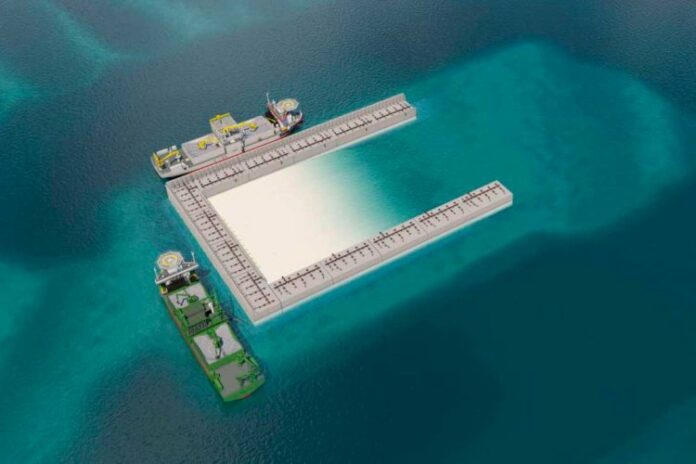The construction of the foundations of the Princess Elisabeth Island will begin in early 2024 and will last 2.5 years. After that, the installation of the high-voltage infrastructure can be started.
The latter will be necessary for bringing the electricity from Belgium’s future offshore wind zone to shore. The island will also be the first building block of an integrated European offshore electricity grid that will connect various hubs and countries together. For instance, Belgium wants to build additional joint interconnections with Great Britain and Denmark. These will give our country access to the massive amounts of renewable energy that are needed to make our industry less dependent on fossil fuels in the short term.
The tender process for the island started in January 2022. Elia received multiple bids from companies based in Belgium and abroad. On the basis of the defined criteria, the Belgian consortium TM EDISON emerged as the winner. Elements such as technical quality and commercial and contractual conditions played a significant role. Attention to safety also played a decisive role. In addition to a specialised fleet, DEME and Jan De Nul hold experience and expertise in the field of dredging, land extension, coastal protection and civil engineering.
The Princess Elisabeth Island will be the world’s first artificial energy island that combines both direct current (HVDC) and alternating current (HVAC). The island’s high-voltage infrastructure will bundle the wind farm export cables of the Princess Elisabeth zone together, whilst also serving as a hub for future interconnectors with Great Britain (Nautilus) and Denmark (TritonLink). These are so-called ‘hybrid interconnectors’ that have a dual function and are therefore more efficient. They facilitate the exchange of electricity between countries and are also connected with gigantic offshore wind farms in the North Sea that will in due course provide our country with large volumes of renewable energy.
The energy island will be located about 45 kilometres off the coast. The area set aside for the installation of the electrical infrastructure will be approximately 6 hectares in size, which is equivalent to about 12 football pitches. The artificial island will be located within the Princess Elisabeth wind zone and will be constructed from concrete caissons filled with sand. A small harbour and helicopter platform will also be provided in order to allow maintenance crews to visit the island. The energy island has received funding from the European Covid Recovery Fund. The Belgian government decided to award the island with a grant of approximately €100 million.
Now that the construction contract has been awarded, the design of the island can be finalised. The construction of the island will start in early 2024 and will continue until August 2026. The caissons will be built and installed in 2024 and 2025. These will form the contours of the island. After that, the base of the island will be raised and prepared for the construction of the electrical infrastructure. It will be connected with the new offshore wind farms and with the Elia onshore grid. In order to deliver the additional electricity to consumers, it is crucial that the Ventilus and Boucle du Hainaut grid reinforcement projects are realised at the same time. Elia aims to ensure all wind farms are fully connected to the mainland by 2030.



